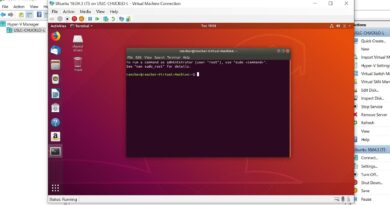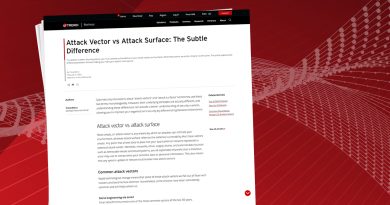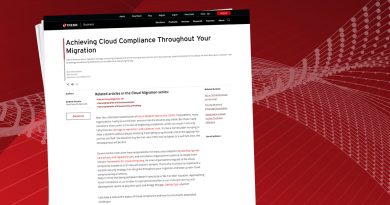Guide to Container Management on AWS


Container management aims to help you create, govern, and maintain your containers. There are tools and services in the market that enable automation of the creation, deployment, maintenance, scaling, and monitoring of application or system containers.
Container management in the context of AWS is about understanding the AWS services and options that abstract aspects of managing cloud or on-prem infrastructure, security, scalability, and high availability of your services. Collectively, these container management services enable you to spend more time on application development and satisfying end users of your services and products. Also, by understanding the proper way to manage containers in AWS, you can move your business ideas to sellable products and go to market rapidly.
There are plenty of options to choose from to manage containers in AWS. Depending on the goals of a project and the resources available, you can select different forms and levels of container management to help meet your goals. This article explores container management on AWS to help you understand when and where to utilize managed container solutions.
Selecting the right level of container management on AWS
Broadly speaking, there are three categories that container management services and tools fall under, with services to facilitate each of them:
- Registry
- Orchestration
- Compute
Amazon Elastic Container Registry service (Amazon ECR) provides a simple, secure way to store and manage container images. AWS offers multiple services in orchestration for you to choose from, including Amazon Elastic Container Service (Amazon ECS) and Amazon Elastic Kubernetes Service (Amazon EKS).
These orchestration services can help you to determine where and when your containers need to run. AWS has multiple services to offer in the computing space, including ECS, which is based on AWS Fargate, Amazon Compute Cloud (Amazon EC2), and AWS App Runner. All these compute services of AWS enable you to start your containers with required system configurations and scale as per your processing needs.
There are several use cases for AWS’s registry services, including the following.
A container image forms the basis of launching a container. A container image is an immutable static file holding instructions required to create a container on a target infrastructure. You can pull and deploy an image in any environment. However, before pulling an image, you need a storage repository to push and manage the container image.
This is the purpose of the Container Registry. An Amazon Elastic Container Registry can be a centralized repository store for you or your organization’s team to push and manage container images from anywhere.
You can opt for AWS ECR to keep vulnerabilities from impacting your images. To meet such security needs, AWS ECR is integrated with Amazon Inspector, which automatically discovers the images in the registry and scans for vulnerabilities. The observed vulnerabilities are ranked based on the context for immediate attention.
During the software development and release lifecycle, applications usually traverse through multiple release versions with multiple tags for container images. With several images pushed into the registry, it might become cumbersome to manage and incur additional costs for storage space.
With AWS ECR, you can define AWS tags for each image to manage images easily by simplifying the image search process. Also, you can set policies to automatically retain the recent image tags and archive older ones into different storage disk types to save costs.
You can store as many images with AWS ECR as you want without worrying about installing any software or scaling the underlying infrastructure, unlike the case of a self-managed container registry on your data center.
AWS ECR helps admins in your organization decide who should have access to images by setting Identity and Access Management (IAM) and repository policies. Also, you can push and pull images securely over the HTTPS protocol. Because AWS ECR is a highly available and distributed service, the hosted images are available for download anytime and anywhere.
A completely managed container orchestration service makes the deployment, management, and scalability of containers a smoother and simpler user experience. Some use cases for AWS orchestration services are below.
With Amazon ECS Anywhere or Amazon EKS Anywhere, you can now build, deploy, manage and scale your container-based applications either in the cloud or in your data centers. Using the same service in a hybrid environment allows you to use the same set of tools for managing, scaling, and monitoring the containers. Based on whether your cluster setup is dependent on the Kubernetes cluster or not, you can choose either Amazon EKS or Amazon ECS accordingly.
With Amazon ECS service, you can run and scale your web applications as per the demand or traffic to your business sites and applications. The scaling is possible in both directions. You can either upscale when the users’ traffic to your application is high or downscale when the users’ traffic to your application decreases.
You can also run your web applications in several availability zones while including the benefits of scalability, performance, availability, and reliability of the AWS environment.
With AWS orchestration services, you can launch thousands of container workloads in an automated way. Opting for the Amazon ECS serverless compute option for container management will save your infrastructure team time and effort that’s otherwise spent setting up configurations and managing the central control panels for managing cluster nodes. With automatic provisioning of instances, auto-scaling features, and a pay-as-you-go subscription model, you can save both compute costs and time.
With the Amazon EKS option to manage your Kubernetes-based container workloads, you could formulate a secure Kubernetes cluster by automatically applying security patches on the control plane.
Some use cases for AWS compute services include those below.
Compute services of AWS will enable you to launch application containers with required configurations and scale up or down as the processing demand increases and decreases.
With Amazon ECS leveraging serverless AWS Fargate technology, you can focus on building your web applications, APIs, and microservices while the AWS team oversees owning, deploying, executing, and managing the compute resources. There are no upfront costs with AWS Fargate. Instead, you only pay for the compute resources used by your apps, optimizing expenses.
Note, though, that AWS Fargate is a managed service, and therefore you don’t have control or direct access to the underlying compute infrastructure such as the Amazon EC2 instances being run.
With the Amazon ECS architected on Amazon EC2, you can fully control the Amazon EC2 instances launching your application containers. You can connect to these instances for administration or troubleshooting purposes and you’ll have the necessary control of the environment. Such a level of control of the instances isn’t possible when the containers are managed using AWS Fargate.
The AWS App Runner is a newcomer among the other AWS compute services (AWS Fargate and Amazon EC2 based compute). The main use case of AWS App Runner is to manage the containers built for web applications and API workloads.
AWS App Runner removes the operational burden as much as possible. This is done by abstracting away the complexities involved in dealing with auto-scaling, securing the application with TLS certificates, auto-renewing SSL certificates, auto-generating URLs for your web apps, mapping it to the domain of your choice, and so on. By abstracting such operational activities, AWS App Runner has become more suitable for developers than the infra-ops teams.
AWS’s compute services (AWS Fargate, Amazon EC2, and AWS App Runner) allow you to launch containers in a more secure, scalable, reliable, and highly available environment by reducing burdens on infra-ops teams.
With AWS App Runner, anyone without knowledge of AWS could get their containerized workload up and running in the AWS cloud in no time. You don’t have to know about configuring the compute resources, load balancing, network setup, or deployment aspects. All these infra-ops activities are taken care of by the service on your behalf.
Conclusion
This article explored the concept of container management in general and in the context of AWS. It detailed the three categories (registry, orchestration, and compute) focused on the container management domain and described when to opt for managed container solutions and the benefits of each category.
AWS offers several services to easily manage your images and run containerized applications in different availability zones with the required scale and high availability requirements. Capacity planning in advance, backup strategy, operating system management, and patching are no more a concern as these aspects can be managed dynamically.
To further simplify security for cloud-native applications, consider a solution with advanced image scanning, policy-based admission control, and container runtime protection. Trend Cloud One™ – Container Security scans throughout your pipeline, verifying new container images as they’re built and providing instant feedback to developers.
Read More HERE



